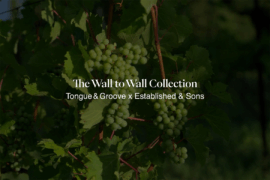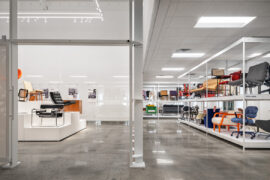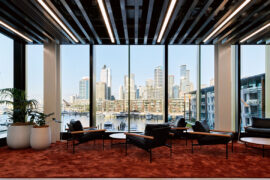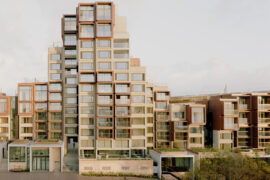Designer furniture group Pedrali has always been committed to environmental sustainability, but now they’ve take a whole new step on that journey – entirely plant-derived water-based paints.

The issue of environmental sustainability is becoming increasingly important in the architecture and industrial design sector. With a view to offering the design community the best possible quality with sustainability in mind, Pedrali has seized the opportunity offered by organic-innovation in the paint industry. The result is finishes using entirely plant-derived and water-based paint.
Formulated with 40% raw materials sourced from so-called ‘waste’ plant substances, these plant-based paints offer durability, chemical- and light-resistance, and industrial usability comparable to classic petroleum-based products, but with a drastic reduction of the fossil-derived component. This allows Pedrali to offer products of the highest quality, fully in line with the most advanced “green policies”, in addition to improving the working environment in which these paints are used.
Here’s our pick for the 4 favourite products from the Pedrali range offered in this revolutionary new approach to finishes.
Nym is a collection made of solid ash wood which reviews English traditional Windsor chairs with a contemporary style. The curved profile of the backrest designs an uninterrupted arch that perfectly joins the seat of solid ash wood and turns into an armrest on the armchair. Elliptic profiles feature all the lines, they enhance the warmth of wood to the touch and provide extreme comfort and lightness.




Nemea is a collection of classically-shaped seatings, whose visible, light structural elements seem to be smoothed by time, like findings from the Ancient Greece. The chair seems to extend into an athletic pose, with its sinuous legs in solid ash grafted to the die-casted aluminium frame placed under the plywood seat.




Frida is a chair that embodies sophisticated technology and represents a landmark in woodworking. The most remarkable factor is represented by the superposition of a three-dimensional curved plywood body of only 3 mm to a solid wood frame. The oak structure is characterized by geometric sections of varying shapes that taper at the edges, giving a light image to the chair and enhancing the conceptual strength of the body.




The Malmö chair was born from an imaginary journey along the sides of a Scandinavian lake. It recalls the experience of a come back home with the cosiness of wood warming up the environment.




INDESIGN is on instagram
Follow @indesignlive
A searchable and comprehensive guide for specifying leading products and their suppliers
Keep up to date with the latest and greatest from our industry BFF's!

London-based design duo Raw Edges have joined forces with Established & Sons and Tongue & Groove to introduce Wall to Wall – a hand-stained, “living collection” that transforms parquet flooring into a canvas of colour, pattern, and possibility.

The undeniable thread connecting Herman Miller and Knoll’s design legacies across the decades now finds its profound physical embodiment at MillerKnoll’s new Design Yard Archives.

Gray Puksand’s adaptive reuse of former Melbourne office into Hester Hornbrook Academy’s new City Campus shows how architecture can support wellbeing, connection and community.

Warren and Mahoney’s design for Beca’s Auckland headquarters turns the mechanics of engineering into poetry, rethinking how workplace design can reveal its own systems.
The internet never sleeps! Here's the stuff you might have missed

Guests joined Cosentino for a behind-the-scenes look at The Block homes, discovering new materials and creative partnerships.

BVN’s Sirius Redevelopment has been named one of two joint winners of The Building category at the INDE.Awards 2025. Celebrated alongside Central Station by Woods Bagot and John McAslan + Partners, the project reimagines an iconic Brutalist landmark through a design approach that retains heritage while creating a vibrant, sustainable future for Sydney.